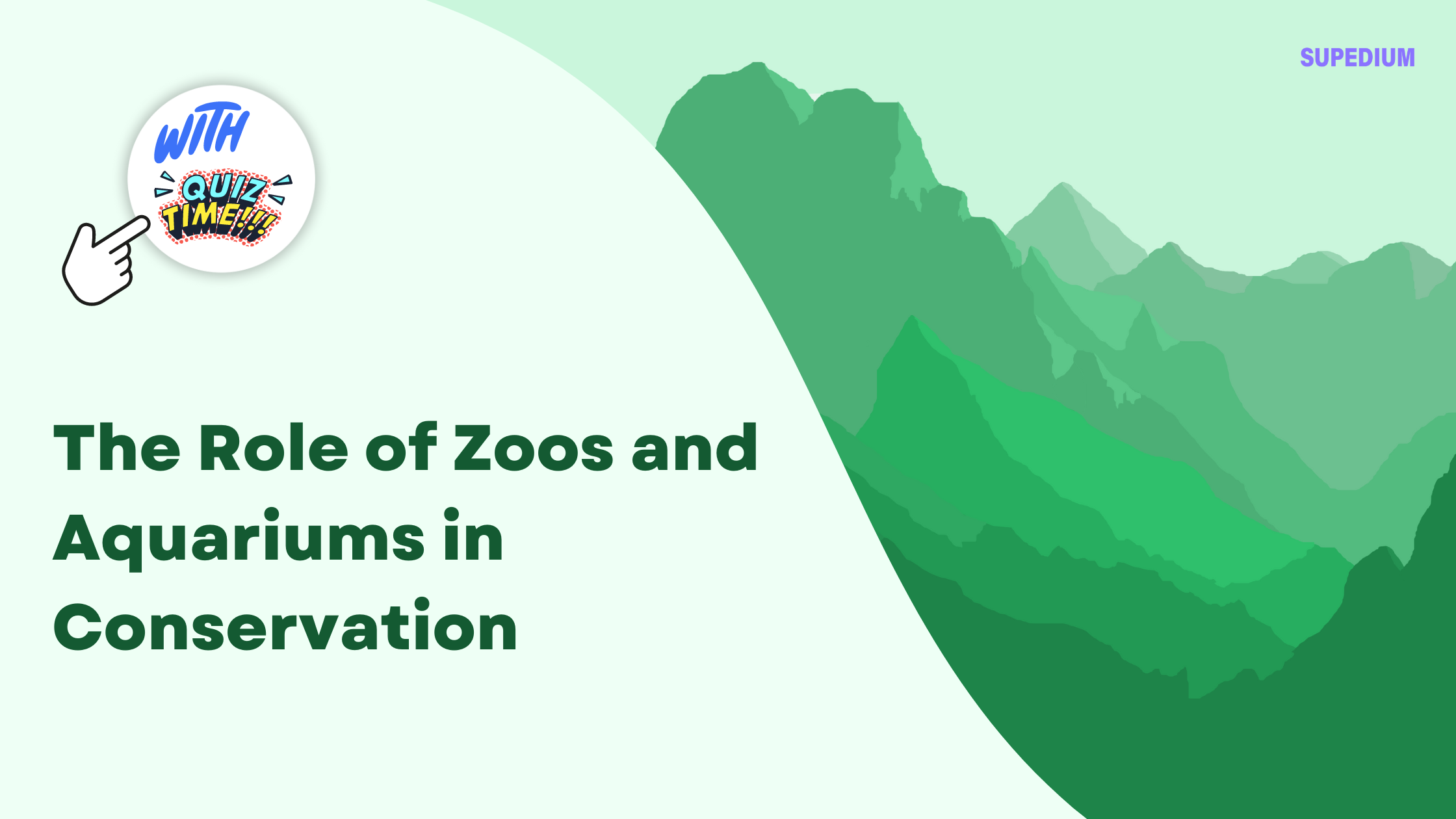Table of Contents
![]()
I. Introduction
Zoos and aquariums, institutions once primarily known for public entertainment and the display of exotic species, have increasingly adopted a crucial role in conservation. Their missions have evolved from mere showcases of wildlife to active participants in the preservation of species and ecosystems. This transformation highlights their significance in addressing global biodiversity challenges and fostering environmental stewardship.
II. Historical Context
A. Early Purposes of Zoos and Aquariums
Historically, zoos and aquariums served as status symbols and sources of entertainment. Early zoos were often private collections of animals owned by royalty or wealthy individuals, and their primary function was to demonstrate power and prestige rather than to contribute to science or conservation. Similarly, aquariums began as curiosities, with collections of marine life intended more for amusement than for education or preservation.
B. Evolution of Their Missions
As public awareness of environmental issues grew, the roles of zoos and aquariums shifted significantly. By the mid-20th century, these institutions began to emphasize education and scientific research. This transition marked the beginning of their involvement in conservation efforts. The focus moved from simply exhibiting animals to addressing the challenges facing wildlife and their habitats.
III. Conservation Efforts by Zoos
A. Species Preservation
One of the primary roles of modern zoos is the preservation of endangered species through captive breeding programs. These initiatives are crucial for species at risk of extinction. For example, the California condor and the Arabian oryx, both once on the brink of extinction, have benefited from well-managed breeding programs in zoos. These programs not only help to increase population numbers but also maintain genetic diversity, which is essential for the long-term survival of species.
B. Habitat Restoration
Zoos are increasingly partnering with environmental organizations to support habitat restoration projects. These collaborations aim to repair and protect the natural environments that wildlife depend on. Zoos contribute by providing funding, expertise, and logistical support for field conservation efforts, helping to restore ecosystems that are vital for the survival of many species.
C. Reintroduction Programs
Reintroduction programs aim to return captive-bred animals to their natural habitats. Successful reintroduction requires careful planning and coordination. Zoos play a critical role in these efforts by preparing animals for life in the wild and monitoring their adaptation. Notable successes include the reintroduction of the black-footed ferret in North America and the Arabian oryx in the Middle East. However, these programs also face challenges, such as ensuring that reintroduced animals can thrive in the wild and integrating them into existing populations.
IV. Conservation Efforts by Aquariums
A. Marine Species Protection
Aquariums contribute significantly to the protection of marine species through breeding and research programs. Efforts include breeding endangered species such as sea turtles and working on the restoration of coral reefs. Aquariums also address issues like overfishing and bycatch by supporting sustainable practices and advocating for marine conservation policies.
B. Ecosystem Health
Aquariums engage in marine habitat restoration, including efforts to rebuild coral reefs and clean up polluted waters. These activities help maintain the health of marine ecosystems, which are crucial for the survival of many species. By partnering with marine conservation groups, aquariums contribute to broader efforts to protect and restore marine environments.
C. Education and Advocacy
Education is a key component of aquarium conservation efforts. Aquariums use their platforms to raise public awareness about marine conservation issues and promote sustainable practices. They conduct public outreach programs, school visits, and interactive exhibits that inform visitors about the importance of protecting marine environments and the species that inhabit them.
V. Education and Research
A. Role in Public Education
Both zoos and aquariums play a vital role in educating the public about conservation. Through exhibits, educational programs, and interactive experiences, these institutions provide visitors with insights into the lives of animals and the challenges they face. This educational outreach helps to foster a greater appreciation for wildlife and encourages individuals to participate in conservation efforts.
B. Scientific Research
Zoos and aquariums are also centers of scientific research. Studies conducted within these institutions contribute to our understanding of animal behavior, health, and genetics. This research supports conservation efforts by providing valuable data that informs the management and care of both captive and wild populations.
C. Collaboration with Academic Institutions
Collaborations with universities and research organizations enhance the scientific contributions of zoos and aquariums. Joint research projects and internships provide valuable training for future conservation professionals and support the development of innovative conservation strategies.
VI. Challenges and Criticisms
A. Ethical Concerns
Despite their contributions to conservation, zoos and aquariums face ethical criticisms related to animal welfare. Critics argue that captivity can negatively impact the physical and psychological well-being of animals. Addressing these concerns involves improving living conditions, enrichment programs, and ensuring that captivity serves a legitimate conservation purpose.
B. Funding and Resources
Zoos and aquariums often face financial challenges, balancing conservation goals with the need to provide engaging visitor experiences. Allocating resources effectively and securing funding for conservation projects are ongoing challenges that require careful management and support from donors and stakeholders.
C. Effectiveness and Impact
Assessing the effectiveness of conservation programs is crucial for ensuring that efforts are making a meaningful impact. Zoos and aquariums must continually evaluate and refine their strategies to maximize their contributions to conservation and address any shortcomings in their programs.
VII. Case Studies
A. Successful Conservation Projects
Several high-profile conservation projects highlight the success of zoos and aquariums in their conservation roles. For example, the giant panda program at the Chengdu Research Base in China has been instrumental in increasing panda populations. Similarly, the manta ray conservation efforts by the Monterey Bay Aquarium have contributed to the protection of these species and their habitats.
B. Lessons Learned
Successful conservation programs share common factors, including strong partnerships, rigorous research, and effective management practices. Lessons learned from these projects can inform future efforts and help address challenges in other conservation initiatives.
VIII. Future Directions
A. Innovations in Conservation
The future of conservation in zoos and aquariums will likely involve technological innovations, such as advanced tracking and monitoring systems, genetic analysis tools, and virtual reality experiences. These technologies can enhance conservation efforts and provide new ways to engage the public.
B. The Evolving Role of Zoos and Aquariums
As conservation challenges continue to evolve, zoos and aquariums will need to adapt their missions and strategies. Expanding their roles to include more comprehensive conservation efforts and addressing emerging threats will be crucial for their continued impact.
IX. Conclusion
Zoos and aquariums have transformed from institutions of entertainment into vital players in global conservation efforts. Their contributions to species preservation, habitat restoration, and public education are significant and growing. Continued support, innovation, and collaboration will be essential for enhancing their roles and achieving long-term conservation goals. As these institutions evolve, their impact on conservation will be a testament to their commitment to protecting our planet’s biodiversity.






Be the first to comment